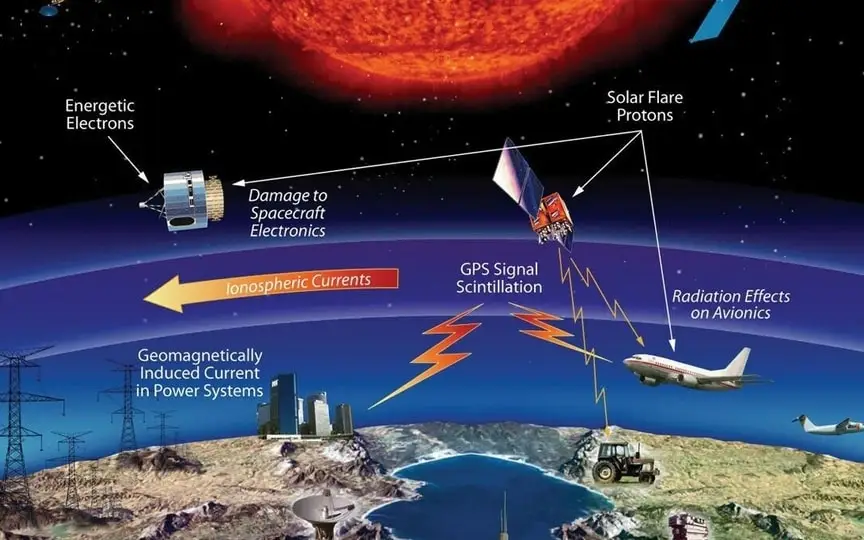NASA Utilizes Artificial Intelligence to Monitor Solar Storms
By analyzing spacecraft data of the solar wind, NASA’s AI-powered predictions can furnish valuable preparation time to safeguard power grids and vital infrastructure, offering advance notice for solar storms. The AI model has the capability to anticipate the whereabouts of an imminent solar storm, providing a 30-minute lead time.
Solar storms are powerful disturbances caused by a sudden release of energy from the Sun. These storms have a significant impact on Earth’s space environment, disrupting satellite communications, power grids and navigation systems.
Now NASA has harnessed the power of artificial intelligence (AI) to improve our understanding and predictions of solar storms.
Understanding solar storms and their effects
The Sun continuously emits solar material, which includes a steady flow known as the “solar wind” and stronger bursts during solar flares. When this material interacts with Earth’s magnetic environment, known as the “magnetosphere,” it can trigger geomagnetic storms. These storms vary in intensity and can disrupt our technology-dependent world.
A multinational collaboration of experts, including NASA, the US Geological Survey and the US Department of Energy, is using artificial intelligence to identify links between the solar wind and disruptive geomagnetic disturbances. Using “deep learning,” a technique that trains computers to recognize patterns using past examples, the team aims to improve preparedness for these disruptions.
DAGGER: An Innovative AI Prediction Model
The team developed a computer model called DAGGER (Deep Learning Geomagnetic Perturbation) that accurately predicts global geomagnetic storms with a 30-minute warning. The model generates forecasts in seconds and updates them every minute. Tests of the model with geomagnetic storms in August 2011 and March 2015 showed DAGGER’s accurate predictions of global storm effects.
DAGGER is a pioneering forecasting model that combines artificial intelligence with real-time space and ground measurements to provide timely and accurate geomagnetic forecasts worldwide. The model’s computer code is available as open source code, allowing power grid operators, satellite controllers, telecommunications companies and others to modify it to suit their own needs.
By utilizing these forecasts, stakeholders can receive early warnings of solar storms and take the necessary measures to secure their assets and infrastructure. These measures may include temporarily shutting down sensitive systems or repositioning satellites to minimize potential damage.
Models like the DAGGER could one day enable solar storm sirens to be installed in power plants and satellite control centers around the world. Like tornado sirens that warn of approaching severe weather, these solar storm sirens would act as a warning system for potential solar storms approaching Earth.




